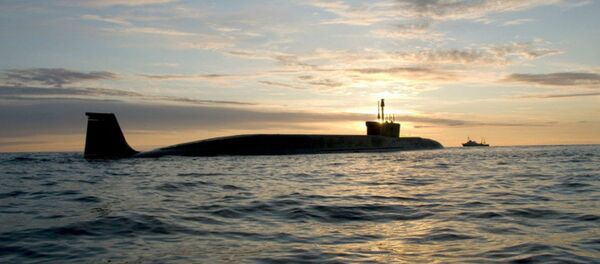In a press statement Saturday, Defense Ministry Eastern Military District spokesman Vladimir Matveev reported that crews of Pacific Fleet ships, complemented by an anti-submarine warfare (ASW) aircraft, had successfully located, tracked and destroyed a simulated enemy submarine in drills in the Sea of Japan.
The operation appears to have been quite a feat, since the 'enemy sub' in question was one of the Pacific Fleet's own Varshavyanka-class submarines (NATO reporting name Kilo), a diesel-electric vessel able to operate so quietly that the US Navy has dubbed it the 'Black Hole'.
"At Pacific Fleet naval training ranges in the Sea of Japan, crews of ships supported by an ASW aircraft successfully completed the task of finding, detecting and destroying a simulated enemy submarine," Matveev said. "The role of the simulated enemy was played by a Varshavyanka-class belonging to the Pacific Fleet, nicknamed the 'Black Hole' for its quiet operation," he added.
Together, the ships and aircraft coordinated their efforts to find and destroy the simulated enemy. Matveev explained that it was the Tu-142 that found the 'enemy' sub, designating its location to the naval strike group via radio beacons, which allowed the vessels to confirm the location of the sub and simulate its destruction.

Varshavyanka-class subs were first commissioned into the Soviet Navy in the 1980s. Since then, Russia has developed an improved version, designated as 'Improved-Kilo-class' by NATO and Project 636 and 636.3 in Russia.
The stealthy diesel-electric vessel, virtually undetectable when submerged, is armed with anti-submarine and anti-ship torpedoes, as well as Kalibr cruise missiles capable of striking sea and ground-based targets. It can also feature a complement of mines and surface-to-air missiles. In addition to serving in the Russian Navy, Project 636 subs have been exported to China, Algeria and Vietnam.

Featuring a hull design which resembles a drop of water, the Varshavyanka-class sub's diesel-electric propulsion system is isolated on a rubber base, preventing it from touching the hull and thus preventing vibrations turning into sonar noise. The sub is fitted with an external anechoic tile coating, meant to deaden any noise coming from inside the vessel.
In 2015, soon after the start of the Russian campaign in Syria, the Rostov-on-Don, a Varshavyanka-class Project 636.3 sub, surprised international observers after launching its complement of Kalibr missiles at Daesh targets in Syria from the Mediterranean Sea.
Given its impressive list of sound-deadening features, it remains a mystery how the Navy Tu-142 actually managed to locate the Black Hole Varshavyanka-class sub. It may be related to some new upgrade to the plane's sub tracking system. In 2015, Russia announced an effort to modernize its fleet of Tu-142s, with officials explaining that the modernization would include improvements to the planes' on-board radio-electronic systems and anti-submarine detection capabilities.

Russia intensified its anti-submarine drilling in the Sea of Japan last week. On Tuesday, two corvettes, the Ust-Ilimsk and Sovetskaya Gavan, conducted ASW drilling, searching for enemy vessels, 'destroying' a target sub with bombs and torpedoes, carrying out live fire exercises against simulated naval and air targets, and practicing other tasks. The drilling intensified following the start of US, South Korean and Japanese joint missile defense drilling, also in the Sea of Japan.






